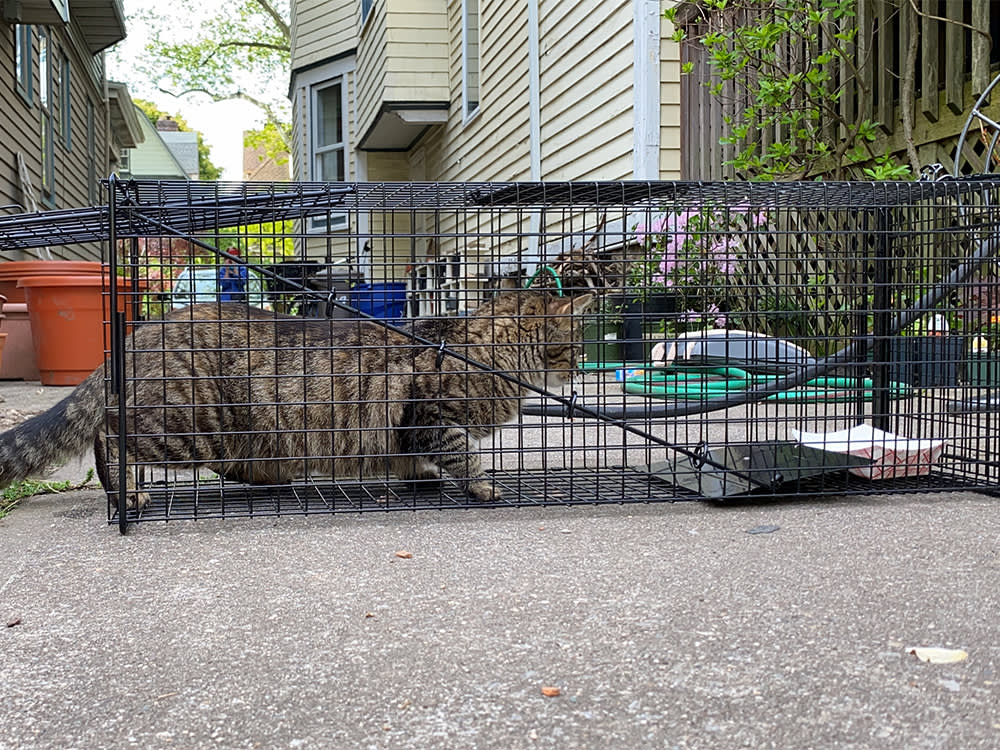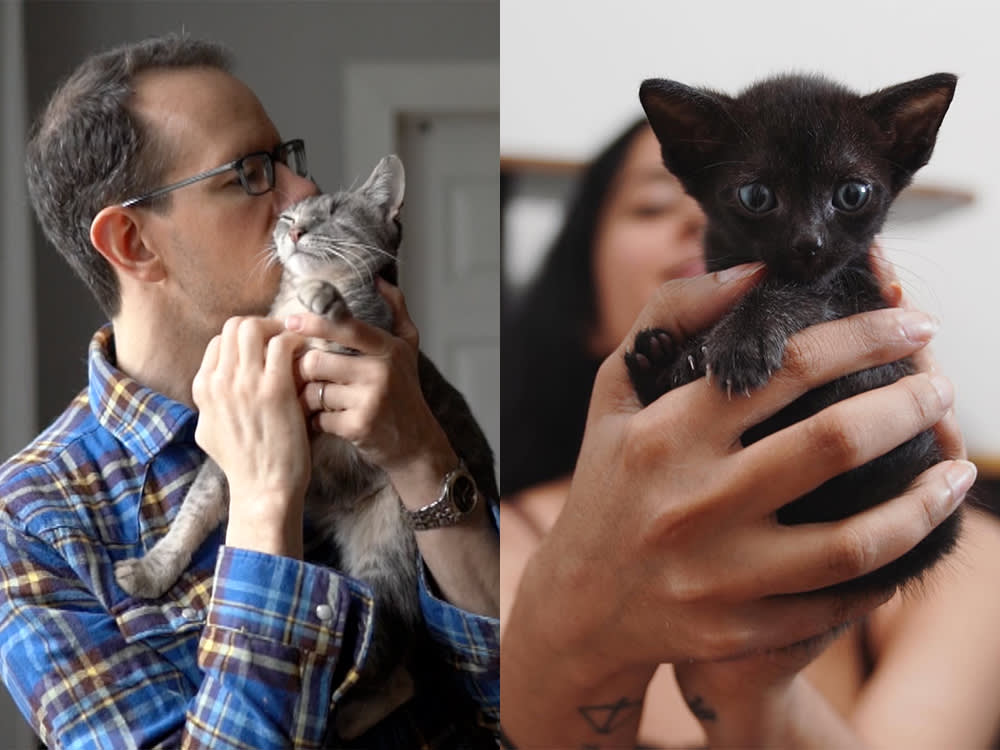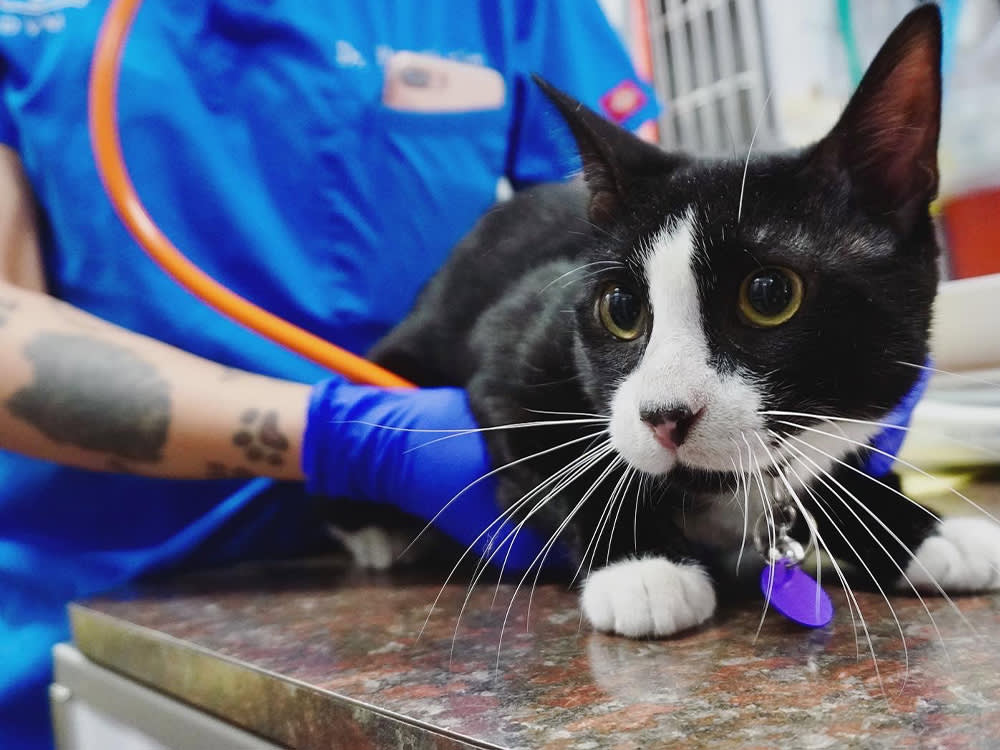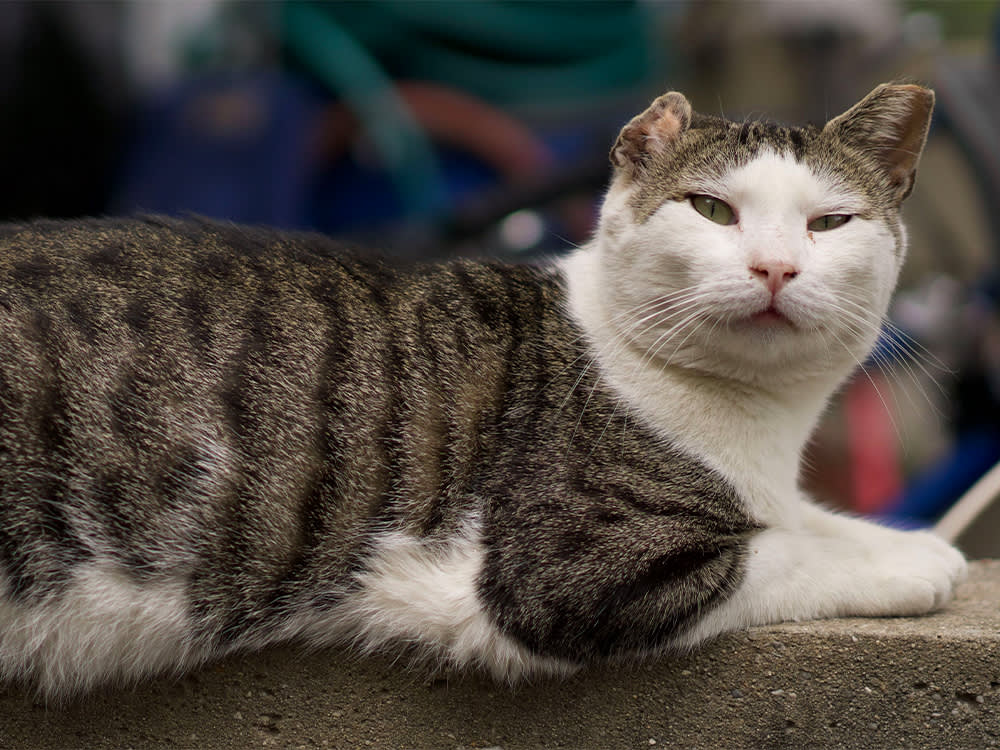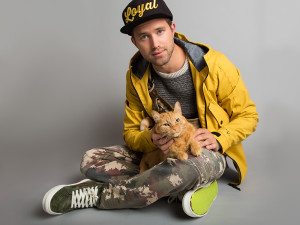How Flatbush Cats Is Saving Brooklyn’s Strays
Ad agency strategist Will Zweigart founded a nonprofit to tackle the neighborhood’s street cat epidemic.
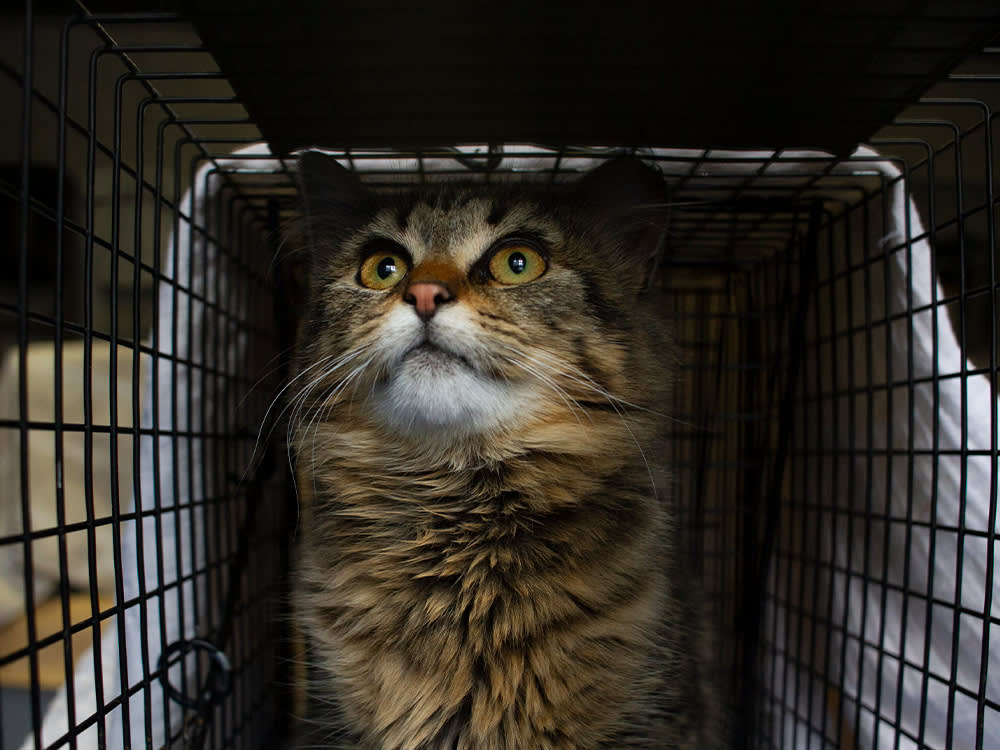
share article
To the Rescue is a column about visionary animal advocates.
Will Zweigart was always a cat person. But he didn’t become a rescuer and animal welfare advocate until he moved to Flatbush, a neighborhood in the heart of Brooklyn, and started seeing strays, well, everywhere. An estimated half a million feral cats live on the streets of New York City, so finding homes for them all is an unlikely scenario. An ad agency strategist by day, Zweigart founded Flatbush Catsopens in a new tab in 2018, a nonprofit focused on TNR. TN-what? TNR stands for trap, neuter, return. And since it’s sadly not possible to rescue all the cats, this is the next best thing to keep the stray cat community in check. His team trains Flatbush residents to TNR cats in the neighborhood in hopes of curbing one of the borough’s most enduring problems. But how did we get here, and where does Flatbush Cats aim to take us in the future? Zweigart filled us in on those plans and more.
You’re an ad man, so how did you get started in cat rescue?
I lived in other parts of Brooklyn and Manhattan and had never seen more than a single cat out on the sidewalk. When we moved to Flatbush we saw dozens of cats, and chatting with neighbors who had lived here their entire lives, this was normal and something that they’d always seen growing up. So we had this sort of outsider shock, researched more about it and learned about techniques like trap, neuter, return where you can sterilize and vaccinate feral cats to prevent the cycle from continuing. We took a free course back in 2016, jumped in, and now we’re proud to teach that exact same course to hundreds of New Yorkers.
As you mentioned, this is a local issue which varies neighborhood to neighborhood. How did you come to realize that the TNR program was the right way to address the problem?
I did what you usually do: I hopped on Google and started typing out key phrases, trying to understand why this is happening and what we could do about it. In that search, I learned about trap, neuter, return (TNR). It takes quite a while for something like that to have mainstream awareness and acceptance. TNR has been around and officially endorsed by different municipalities around the country for 20 to 30 years, but it’s still relatively new. If you were to pull 10 cat lovers in New York off the street, I’m guessing eight or nine of them wouldn’t have even heard the term, so I always try to remember that that as a long-time resident and as a lifelong cat lover, I didn’t know about the problem or any potential solutions either.
How does Flatbush Cats work to make this information more widespread?
It’s important to note that when you research this problem, it becomes clear pretty quickly that we cannot rescue and adopt our way out of this problem because when you understand the cycle, cats are really good at reproducing. A female cat can have a litter as young as six months old. When she’s still a kitten herself, she can have two to three litters a year. With an average of four kittens per litter, you can do some quick math to see how a few unsterilized cats outside can quickly become a problem.
One of our goals is to expand the narrative around animal welfare. What does it mean to rescue and adopt a cat if you're not actually getting to the end of the cycle? Rescue and adoption is simply not enough, and so we have to expand the narrative beyond thinking that just adopting a cat from a shelter is going to solve the problem. That’s purely treating the symptom, our mission is about actually solving the problem. We believe if we bring enough people and resources to the issue we can completely end the cycle, and there’s no need to be killing cats in shelters, and there’s no need to have cats suffering outside.
I’m sure a lot has changed in the past year and a half, particularly with Covid restrictions. How have things changed for you?
We’ve partnered with the ASPCA, which is based here in New York on several different initiatives, and reached out to them during Covid about bringing their TNR class online. We partnered together, updated the curriculum and created a class that would work as an online workshop. We brought that out last summer and it was really important to us that we not stop or slow down due to Covid. Obviously, we had a number of barriers there, and we have to put everyone’s health and safety first.
We had vastly limited resources in terms of available spay/neuter appointments that you can secure for cats as a volunteer, that was already an issue way before Covid. So then you have the clinics literally shut down, and if you're not spaying and neutering any cats you have an explosion of the outdoor cat population, which immediately creates a full traffic jam at city shelters which then were overloaded to the point where they had to halt intake. You have more and more cats being born outside, suffering and dying outside, and then on top of that you have Covid disproportionately impacting lower income, underserved communities of color. Homeless shelters do not accept families with pets, so there was an explosion of displaced friendly adult cats being left on the sidewalk and abandoned inside empty apartments. We just needed to keep going and it was survival mode, but now we're back on offense and trying to figure out how we can get in front of things.
What are some of the things you’re doing to raise awareness about TNR?
We need a massive change in how people think about rescue in the cat world, and we need a massive change in how people even understand the problem itself. People can’t be part of a solution if they don’t know there's a problem, and so I always go back to my personal experience in New York. We polled people recently, and we asked them “when did you learn about the cat overpopulation crisis?” and a lot of people hadn't even heard about it until they encountered it personally. The animal welfare industry has a lot of catch-up to do on basic awareness and education so we’re happy to take a lead role on that. One of our bigger goals is just making sure more New Yorkers see what's actually happening, so we put a big emphasis on documenting our work and breaking down this topic so that folks can see the role that they can play. We teach a monthly TNR classopens in a new tab, and we just make it as easy as possible for people to learn about this because we remember how challenging it was to get started.
What are the organization’s long-term goals?
It’s to truly get to the root of the problem, and the root of the problem is unsterilized, owned cats that have access to go outside. Let’s say four kittens are born to a neighbor and they don’t have any understanding of what to do. There’s no investment in New York for such awareness programs, so they give the kittens away and they believe that they’re doing a good thing, but it’s akin to spreading a virus in all four directions. If you wanted to get those cats spayed or neutered, a vet in Brooklyn would charge you $500-$700 per cat, which is unsustainable. Our long-term goal is to actually add capacity to the city and so that anyone in New York would have access to affordable veterinary care for their pets.
Part of the problem is that it can sometimes be a little bit invisible. Is there anything in particular that you use to measure the impact that you're having?
We’re not measuring success by traditional metrics. Previously, a rescue group may have measured success by the number of adoptions per year. That’s kind of like if you’re a food bank and you’re saying every year we serve more people. Okay, well, that’s a problem — you want to be serving less people. So we’re searching for metrics that are closer to the outcomes that we want. The outcomes we want are no cats on the street in New York, and no cats euthanized in shelters.
In the short term, the outcomes that we’re measuring are largely around volunteerism. If you can teach someone how to help the cats on their block, how to talk to their neighbors, how to recognize when a cat needs help, and how to sterilize an entire colony of feral cats that otherwise would have gone from four to 20, that’s one of the highest impact things we can do. That’s why we put a huge emphasis on education advocacy and awareness. We’ve trained hundreds of New Yorkers, and not just training them but also sticking with them and providing them support and resources. It’s really intimidating in New York when you don’t have a car and you have a small apartment — you can’t afford a $2,000 vet bill. We’d love for you to be able to bring the cat into a free or low-cost spay and neuter clinic to get all the wellness services that cat needs without you going bankrupt in the process.
How can people get involved and help out neighborhood cats?
I think local support is really important, so I would say first of all do some research online, maybe even check Instagram as well, and try to try to figure out who the local rescue and TNR group is. Many rescues do not do TNR but almost all TNR groups do rescue, if that makes sense. One of the best things you can do is find your local TNR and rescue group and either foster with them, because they’re gonna need help, and even better get trained on how to do TNR so that you can actually get ahead of things and prevent more kittens from being born in the future that will need homes.
You can go to our websiteopens in a new tab, we’re launching a free online TNR course. So wherever you are, anywhere in the world, you can learn the basics and apply those skill sets to wherever you live. The other thing I’d recommend just at a very broad level is to find and follow rescue groups near you, so that you can start to get a sense of what's going on in your area. Our Youtube channel is designed to give you an entry point into the world of cat rescue and TNR without being tragic and overbearing. It's designed to be educational and inspirational but it always follows real stories so you can get a sense of the reality of what’s going on.
Anything you would like to add in closing?
I’m excited for the future because this is a problem we actually can solve. We’re all overwhelmed right now with so many different types of crises locally and globally, it can be overwhelming. But it can also be incredibly fulfilling and rewarding to get involved and to do something about these problems, and one thing that I find really energizing about this particular issue is we see the solution. If we get enough people and resources together, we can solve this problem. And there are different parts of the country that are ahead of where New York is — they have funded spay and neuter services, community members have access to basic wellness care for their animals, and they’ve seen a dramatic decrease in euthanasia in their area...so we can solve this. That’s worth remembering and being excited about.

Jeremy Gundel
Jeremy Gundel is a writer and comedian from New York City. He’s a veteran performer at the Magnet Theater, been a featured contributor for CollegeHumor, McSweeney’s Internet Tendency, and performed stand-up in bars, basements, and basements of bars. He lives with his wife and two freeloading cats.
Related articles
![Nathan sitting on the floor with a cat in front of a gray background]() opens in a new tab
opens in a new tabMeet “Nathan the Cat Lady” — Model, Actor, Cat Dad Extraordinaire
For Nathan Kehn, building cat forts, scooping litter boxes, and traveling the country to rescue stray kitties is all in a day’s work.
![anonymous woman pampering and taking care about a small ginger kitten]() opens in a new tab
opens in a new tab6 Ways to Help Local Shelters Without Committing to Full-Time Pet Parenthood
Adoption isn’t for everyone—here are other ways you can be there for animals in need.
